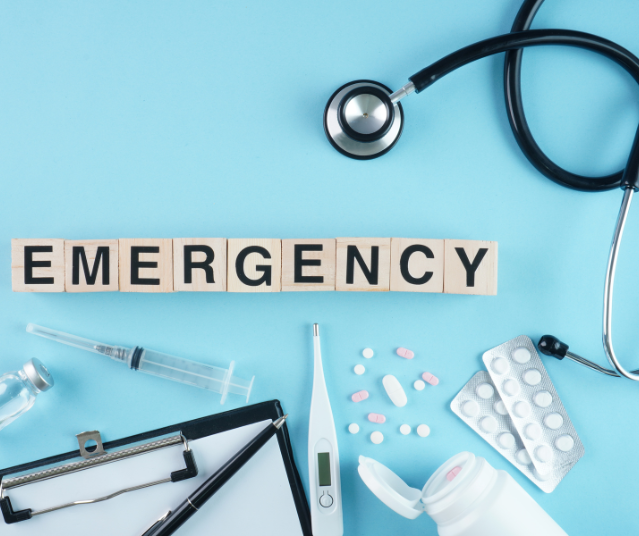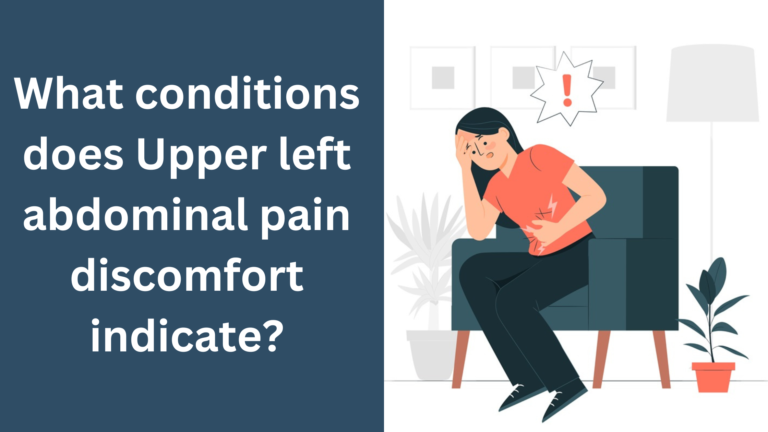Introduction
When you’re facing a sudden, non-life-threatening health issue, deciding where to seek help can be overwhelming. Many people assume that a visit to the Emergency Room (ER) is their only option. However, this isn’t always the case. For non-emergency health issues, UC is often your best bet. UC centers provide a quick, affordable, and convenient alternative to Emergency Care, offering patients timely assistance without the long waits and high costs associated with the ER.
In this article, we’ll explore why UC is an ideal choice for non-emergency health situations. We’ll cover the benefits of UC, compare it to Emergency Care, and highlight the variety of services available at UC facilities.
What is Urgent Care (UC)?
Urgent care is a type of healthcare service that provides immediate, non-emergency treatment for minor injuries and illnesses. It’s an ideal option for people who need quick medical attention for issues like sprains, cuts, mild infections, or flu symptoms but don’t require the extensive resources of an emergency room (ER). Urgent care centers typically offer extended hours and walk-in availability, making them a convenient choice when primary care offices are closed or unable to accommodate same-day appointments. Staffed by qualified healthcare professionals, these centers bridge the gap between routine doctor visits and emergency care, providing affordable and accessible treatment to help patients feel better fast without the long waits often associated with ER visits.

Understanding Urgent Care and Its Purpose
UC is a type of healthcare service designed to provide immediate, walk-in treatment for non-emergency medical issues. Unlike Emergency Care, which addresses severe, life-threatening situations, UC focuses on conditions that require prompt attention but are not critical enough to warrant a visit to the ER.
Key Services Offered by Urgent Care Centers
UC centers provide a range of services that cater to various health issues. Common treatments include:
- Minor illnesses such as cold, flu, and sore throat
- Minor injuries like cuts, sprains, and fractures
- Diagnostic tests, such as X-rays and lab work
- Vaccinations and physical exams
- Treatment for skin conditions, allergies, and infections
1. Shorter Wait Times Than Emergency Care
One of the main advantages of Urgent Care over Emergency Care is the reduced waiting time. Emergency Rooms are designed to handle life-threatening situations, and patients with severe injuries or critical health issues are prioritized. This system means that if you’re visiting the ER with a non-emergency condition, you may have to wait hours while more urgent cases are handled first.
Urgent Care Centers Prioritize Non-Critical Conditions
Urgent Care centers cater specifically to non-emergency health issues, which means the wait times are typically shorter. Unlike the ER, where critical cases take priority, Urgent Care centers operate on a first-come, first-served basis, allowing patients with minor ailments to receive treatment much faster.
- Quicker Access to Care: Many Urgent Care centers are committed to seeing patients within 15-30 minutes of their arrival, as they don’t need to triage cases based on severity. This allows patients to get prompt attention for conditions that require immediate care but aren’t life-threatening.
- Less Frustration and Anxiety: For patients experiencing discomfort, shortness of breath, or general distress, the ability to be seen quickly at an Urgent Care center can be incredibly reassuring.
2. Affordable Care for Non-Emergency Situations
A trip to the ER can be extremely costly, especially for those without health insurance. Emergency Rooms are expensive by design due to the resources and high-level staff needed to handle severe cases. Unfortunately, these high costs often extend to patients seeking treatment for non-emergency situations.
Lower Copays and Transparent Pricing at Urgent Care
In contrast, Urgent Care centers provide an affordable alternative. Many health insurance plans offer significantly lower copays for Urgent Care visits than for ER visits. Additionally, Urgent Care centers are generally transparent about their pricing, so patients know upfront what to expect, helping to avoid the high and sometimes unexpected bills that often follow an ER visit.
- Accessible for Uninsured Patients: For individuals without insurance, Urgent Care is far more affordable than Emergency Care. Many centers offer flat rates or package pricing, making it easier to budget for healthcare expenses.
- No Surprise Billing: With clear pricing structures, Urgent Care centers eliminate the anxiety associated with surprise bills. This transparency builds trust with patients and ensures they understand the costs associated with their visit.
3. Convenient Locations and Accessibility
Urgent Care centers are generally located in easily accessible areas, such as shopping centers, residential neighborhoods, and high-traffic urban zones. Their widespread locations make Urgent Care centers a convenient choice, especially for individuals without immediate access to hospitals or who may live far from the nearest Emergency Room.
Extended Hours for Patient Convenience
Beyond location, Urgent Care centers typically offer extended hours, including late evenings, weekends, and even holidays. This flexibility allows patients to access healthcare when their primary physician’s office may be closed, without needing to resort to the ER.
- Available During Off-Hours: Many Urgent Care centers operate outside of traditional business hours, accommodating those who work late or have other commitments.
- Nearby Access for Immediate Care: For common ailments like sprains, minor burns, and colds, having an Urgent Care center nearby can provide peace of mind, knowing care is accessible within minutes.
4. No Appointment Needed
One of the most convenient aspects of Urgent Care is the ability to walk in without an appointment. Unlike many primary care offices where appointments must be scheduled days or weeks in advance, Urgent Care centers allow patients to come in as they need, making it a go-to solution for unexpected health issues that require quick attention.
Walk-In Flexibility for Immediate Needs
Urgent Care centers are set up to accommodate walk-ins, providing patients with the flexibility to receive medical attention when needed, without the hassle of planning in advance. This is especially valuable for patients facing minor health concerns that may worsen without timely care.
- Quick Treatment for Unplanned Health Issues: Whether it’s a minor injury from a sports activity or sudden symptoms of an illness, Urgent Care centers provide immediate assistance.
- Avoiding Long Delays: Patients no longer have to wait for an appointment slot to open up with their regular doctor. They can walk in and get help promptly, often within an hour of arrival.
5. Comprehensive Services for Various Conditions
Urgent Care centers offer an impressive range of services, covering numerous minor illnesses and injuries, and many have diagnostic capabilities, such as X-rays and lab tests. This level of service makes Urgent Care centers a one-stop shop for many health concerns, eliminating the need to visit multiple facilities to get the necessary tests or treatments.
Versatile Treatment Options Under One Roof
The scope of services at Urgent Care centers is broad. Whether it’s for treating minor fractures, handling basic skin infections, or providing flu shots, Urgent Care can address a variety of health needs in a single visit.
- On-Site Diagnostic Tools: Many Urgent Care centers have X-ray machines, blood test labs, and other diagnostic tools, enabling them to diagnose conditions on the spot. This is especially useful for issues like minor fractures or infections, where a quick diagnosis can lead to immediate treatment.
- Wide Range of Treatments: From respiratory infections and sinus issues to sprains, minor burns, and allergic reactions, Urgent Care centers provide treatments for a wide range of ailments. They also offer vaccinations, physical exams, and preventive services, making them ideal for general health needs.
6. Highly Qualified Medical Staff

Some people worry that Urgent Care centers may lack the level of expertise found in a hospital. However, Urgent Care facilities are staffed by qualified medical professionals, including board-certified doctors, nurse practitioners, and physician assistants. Many of these professionals have prior experience in Emergency Care and are well-equipped to handle a variety of non-life-threatening conditions.
Skilled Staff with a Patient-Centric Approach
The medical professionals at Urgent Care centers are trained to treat a broad spectrum of health issues efficiently and effectively. This level of expertise ensures that patients receive high-quality care comparable to that found in a traditional medical setting.
- Experience with Emergency Cases: Many Urgent Care physicians and staff members have experience working in ER settings, so they bring a high level of skill to treating minor emergencies. This experience is invaluable for providing patients with accurate diagnoses and effective treatments.
- Focus on Patient Comfort and Safety: With a dedicated focus on non-emergency health needs, Urgent Care centers provide a comfortable, stress-free environment. Staff members are attentive to patient needs, making it easier for individuals to feel relaxed and assured in their care.
7. Helps Keep Emergency Rooms Uncluttered
By opting for Urgent Care centers when facing non-emergency health issues, patients help alleviate the strain on Emergency Rooms, which are designed to handle life-threatening situations. This choice helps reduce overcrowding in ERs, allowing emergency medical staff to prioritize patients who need immediate, life-saving treatment.
Supporting a More Efficient Healthcare System
Overcrowded ERs can lead to delays in treatment for patients with critical needs. By reserving ER visits for true emergencies, patients contribute to a more efficient healthcare system, helping ER staff focus on severe cases without the added pressure of non-emergency cases.
- Ensuring Faster Care for Critical Cases: When patients with minor injuries or illnesses choose Urgent Care instead of the ER, it reduces congestion in emergency facilities. This leads to faster, more focused care for individuals facing life-threatening conditions, benefiting the healthcare system as a whole.
- Improved Patient Experience: With fewer non-emergency cases, ERs can provide better, faster care to those in critical need, creating a more positive experience for all patients involved.
Final Thoughts on Why Urgent Care is the Right Choice for Non-Emergency Health Issues
When facing a non-life-threatening health issue, Urgent Care centers offer a practical, accessible, and affordable solution. With shorter wait times, convenient locations, qualified medical staff, and a wide range of services, Urgent Care is often the best option for patients needing immediate attention without the severe complications of emergency cases.
Empowering Patients to Make Informed Decisions
Choosing the right level of care not only saves you time and money but also empowers you to make informed choices about your health. By understanding the differences between Urgent Care and Emergency Care, you can avoid unnecessary stress and receive the appropriate treatment for your specific condition.
Encouraging a Healthier, More Efficient System
Opting for Urgent Care for non-emergency issues contributes to a more balanced healthcare system, helping emergency facilities stay focused on life-saving cases. This choice benefits not only you as a patient but also the larger community by promoting an efficient and effective approach to healthcare.
Why Urgent Care is a Better Option for Non-Emergency Health Issues
1. Shorter Wait Times Compared to Emergency Care
One of the biggest frustrations with Emergency Care is the long waiting period. Since ERs prioritize patients based on the severity of their condition, individuals with non-life-threatening issues are often left waiting for hours. UC, on the other hand, offers significantly shorter wait times, as they primarily deal with non-critical conditions.
Faster Access to Care
UC centers aim to see patients within minutes rather than hours. This fast access allows you to receive timely medical assistance without the frustration of prolonged waiting times.
Streamlined Treatment Process
Unlike the ER, where patients with severe cases are prioritized, UC centers have a streamlined process designed to handle minor health issues quickly and efficiently.
2. Affordable Option for Non-Emergency Situations
Emergency Care can be extremely costly, especially if your condition doesn’t require immediate, life-saving intervention. UC provides an affordable alternative for non-emergency health issues.
Lower Copays and Fees
In most cases, the fees and copays at UC facilities are significantly lower than those at the ER. This affordability makes UC a practical choice for people who want quality care without facing a financial burden.
Insurance Compatibility
Most health insurance plans cover visits to UC centers, further reducing the cost for patients. Unlike ER visits, which often come with unexpected high bills, UC centers offer transparent pricing that helps patients avoid financial stress.
3. Wide Availability of Urgent Care Centers
UC facilities are widely available and typically located in accessible areas. With extended hours and weekend availability, UC centers provide a convenient healthcare option for patients who can’t wait for a regular doctor’s appointment but don’t need Emergency Care.
Easy Accessibility and Convenient Locations
UC centers are often found in populated areas, shopping centers, and near residential neighborhoods. This easy accessibility allows patients to receive quick care without traveling long distances.
Extended Hours for Patient Convenience
Many Urgent Care centers are open late in the evening, on weekends, and even during holidays, providing flexibility for patients with busy schedules.
4. High-Quality Medical Staff and Services
Patients sometimes worry that UC might offer lower-quality services compared to Emergency Care. However, UC centers are staffed with highly qualified medical professionals, including physicians, nurse practitioners, and physician assistants.
Skilled Medical Professionals
Urgent Care staff are trained to handle a range of medical issues efficiently. Many have backgrounds in Emergency Care and are equipped to provide high-quality treatment for non-emergency conditions.
Comprehensive Services for Diverse Needs
In addition to treating minor illnesses and injuries, UC centers offer diagnostic services like X-rays and lab testing, ensuring patients receive comprehensive care under one roof.
5. Reducing the Burden on Emergency Care
By visiting Urgent Care for non-emergency issues, patients help reduce the demand on Emergency Care services. This allows ERs to prioritize critical cases, ultimately improving patient care for those who truly need immediate assistance.
Allowing Emergency Rooms to Focus on Critical Patients
ERs are intended for serious health emergencies, and using them for minor issues can lead to overcrowding. By choosing UC, you contribute to a more efficient healthcare system, where Emergency Care can focus on life-threatening situations.
Contributing to a More Efficient Healthcare System
Choosing Urgent Care for non-emergency health needs not only benefits individual patients but also promotes an overall more efficient healthcare system by minimizing unnecessary strain on Emergency Care resources.
When to Choose Urgent Care Over Emergency Care

Common Conditions Treated at Urgent Care
UC centers are well-equipped to handle a range of conditions that don’t require Emergency Care. Here are some common issues treated at UC:
- Minor Burns and Cuts – For minor burns and lacerations that need immediate attention but aren’t life-threatening.
- Sprains and Strains – For injuries that require treatment but don’t pose a risk of severe damage.
- Allergic Reactions – Mild allergic reactions that don’t involve severe breathing problems or anaphylaxis.
- Fever or Flu Symptoms – For fevers that are not dangerously high or associated with severe symptoms.
- Ear and Sinus Infections – Common infections that cause discomfort but aren’t emergencies.
Situations Requiring Emergency Care Instead
While UC is suitable for many non-critical health issues, certain conditions always require Emergency Care:
- Severe Chest Pain – Chest pain can indicate a heart attack, which requires immediate ER attention.
- Difficulty Breathing – Breathing problems can be life-threatening and should be addressed in Emergency Care.
- Severe Trauma or Head Injuries – Traumatic injuries and head wounds require specialized care available at the ER.
- Uncontrolled Bleeding – If bleeding cannot be controlled, Emergency Care is necessary.
- Sudden, Severe Abdominal Pain – Intense abdominal pain could be a sign of appendicitis or other serious conditions.
Benefits of Knowing the Difference Between Urgent and Emergency Care
Understanding when to choose UC over Emergency Care can help you save time and money while ensuring you receive the appropriate level of care for your condition. Making the right choice also aids in improving the efficiency of healthcare services overall.
The Convenience of Walk-In Service at Urgent Care
No Appointments Needed
Urgent Care centers offer the benefit of walk-in service, eliminating the need for appointments. This flexibility is ideal for people who require immediate attention without the hassle of scheduling.
Quick Access to Healthcare Without Planning Ahead
Patients can receive medical attention quickly, even during unexpected situations, without needing to wait for a specific appointment time.
Final Thoughts on Choosing Urgent Care for Non-Emergency Health Issues
Trust Urgent Care for Fast and Reliable Treatment
UC centers offer a practical, efficient solution for addressing non-emergency health issues. With shorter wait times, lower costs, and convenient locations, UC is often the best choice for those seeking prompt medical assistance.
Empowering Patients to Make Informed Healthcare Choices
By understanding the role of UC versus Emergency Care, patients can make better healthcare decisions, ultimately improving their experience and contributing to a more effective healthcare system.
Final Reminder: Choose Wisely Between Urgent and Emergency Care
Remember, Emergency Care is critical for life-threatening conditions, while UC serves as the perfect alternative for less severe issues. Making the right choice not only benefits you but also enhances the healthcare system as a whole.
Conclusion
When faced with a non-emergency health concern, UC stands out as an accessible, affordable, and efficient solution. Its availability, affordability, and quality of care make it an invaluable option for patients seeking immediate medical assistance. By choosing UC for non-life-threatening conditions, you save time and money, and help ensure that Emergency Care is reserved for those who truly need it.










